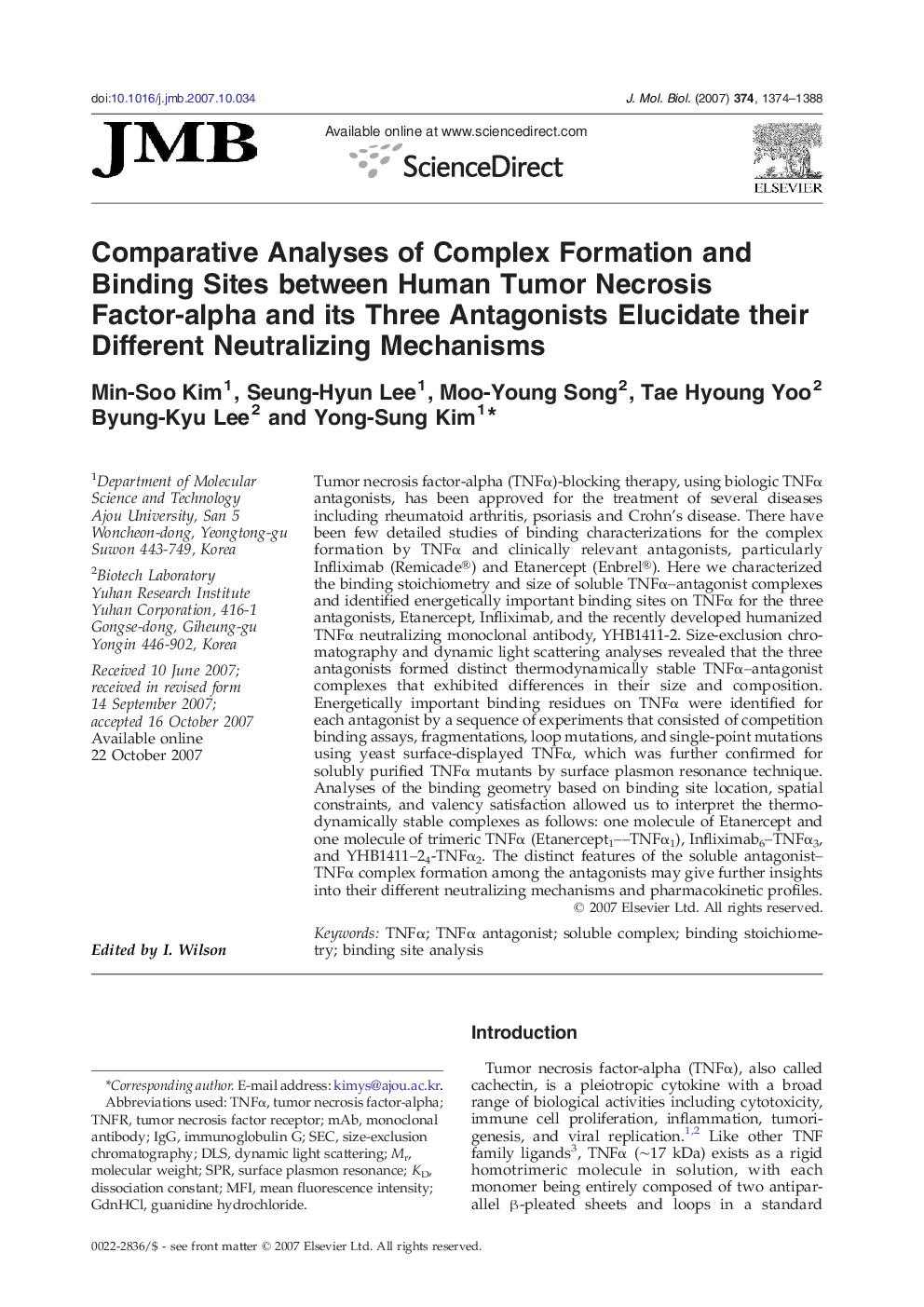| کد مقاله | کد نشریه | سال انتشار | مقاله انگلیسی | نسخه تمام متن |
|---|---|---|---|---|
| 2188072 | 1096151 | 2007 | 15 صفحه PDF | دانلود رایگان |

Tumor necrosis factor-alpha (TNFα)-blocking therapy, using biologic TNFα antagonists, has been approved for the treatment of several diseases including rheumatoid arthritis, psoriasis and Crohn's disease. There have been few detailed studies of binding characterizations for the complex formation by TNFα and clinically relevant antagonists, particularly Infliximab (Remicade®) and Etanercept (Enbrel®). Here we characterized the binding stoichiometry and size of soluble TNFα–antagonist complexes and identified energetically important binding sites on TNFα for the three antagonists, Etanercept, Infliximab, and the recently developed humanized TNFα neutralizing monoclonal antibody, YHB1411-2. Size-exclusion chromatography and dynamic light scattering analyses revealed that the three antagonists formed distinct thermodynamically stable TNFα–antagonist complexes that exhibited differences in their size and composition. Energetically important binding residues on TNFα were identified for each antagonist by a sequence of experiments that consisted of competition binding assays, fragmentations, loop mutations, and single-point mutations using yeast surface-displayed TNFα, which was further confirmed for solubly purified TNFα mutants by surface plasmon resonance technique. Analyses of the binding geometry based on binding site location, spatial constraints, and valency satisfaction allowed us to interpret the thermodynamically stable complexes as follows: one molecule of Etanercept and one molecule of trimeric TNFα (Etanercept1––TNFα1), Infliximab6–TNFα3, and YHB1411–24-TNFα2. The distinct features of the soluble antagonist–TNFα complex formation among the antagonists may give further insights into their different neutralizing mechanisms and pharmacokinetic profiles.
Journal: Journal of Molecular Biology - Volume 374, Issue 5, 14 December 2007, Pages 1374–1388